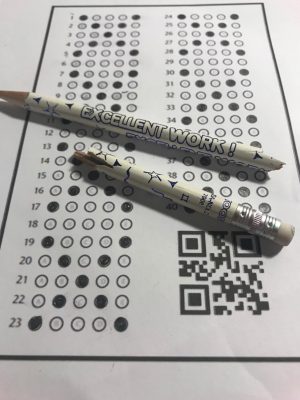Implementation of new student ID policies cause complications
While some new student ID policies keep students safe, others simply inconvenience them.
December 4, 2019
When students get school IDs every year, they tend to toss them into backpacks and forget about them. This year, though, the IDs have more applications within the school.
According to Assistant Principal Raymond Dawson, IDs will be required to access the media center, nurse’s office, counseling department, College and Career Center, Office of Student Affairs and main office. These are places in the building that are frequently visited and utilized by students.
However, for high school students, keeping up with a small piece of plastic can seem inconvenient. Students can forget to carry their ID with them, making them unable to go to certain places in the building.
Consider these two scenarios: First, imagine you have an extensive assignment due; however, you have little to no time to work on the assignment after school. You decide to best utilize your time by going to the media center during lunch to work on the assignment, taking advantage of the quiet and productive environment it offers. You get to the media center ready to work, but you are not allowed to enter due to a simple mistake: you left your student ID at home. The time you have to work on the assignment is now significantly decreased.
Next, imagine this scenario: You are in class, and suddenly you start to feel nauseous and dizzy. You ask your teacher for a pass to the nurse, hoping to receive some type of care or relief. However, once again, there is a catch. In your pain, you forgot to bring your student ID with you, so you are unable to receive the care you need. However, in cases of medical emergency, it is reasonable that you will not be turned away.
In both of these instances, the student could not do something simply because they forgot their student ID. In the first scenario, the student could not take advantage of an educational opportunity, and as a result, they might not get their assignment done on time. In the second scenario, the student could not receive proper care and may fall more ill. Students are already expected to be responsible and keep up with important documentation, such as driver’s licenses, however adding an additional document can make it harder for students to keep track of things. One solution to this problem is making student IDs accessible digitally. Most students always have their phones on them, and being able to provide their ID online gives them one less thing to keep up with.
Requiring students to have an ID to go to certain parts of the building seems unnecessary because it can be reasonably assumed that every teenager in the building is a student of Grady. When students misplace or leave their ID somewhere, they cannot complete necessary tasks.
While this part of having the IDs can seem unnecessary, there is an advantage. The new IDs include a barcode that is attached to each student, and will be scanned when a student is tardy or has an absence. This new method is safer than the previous method of students writing their names down on a list (where they could easily lie about their identity) and is more efficient for everyone.
The barcode system on the IDs is positive because it is safer and more reliable. However, requiring students to have their IDs to access parts of the school seems unnecessary.










